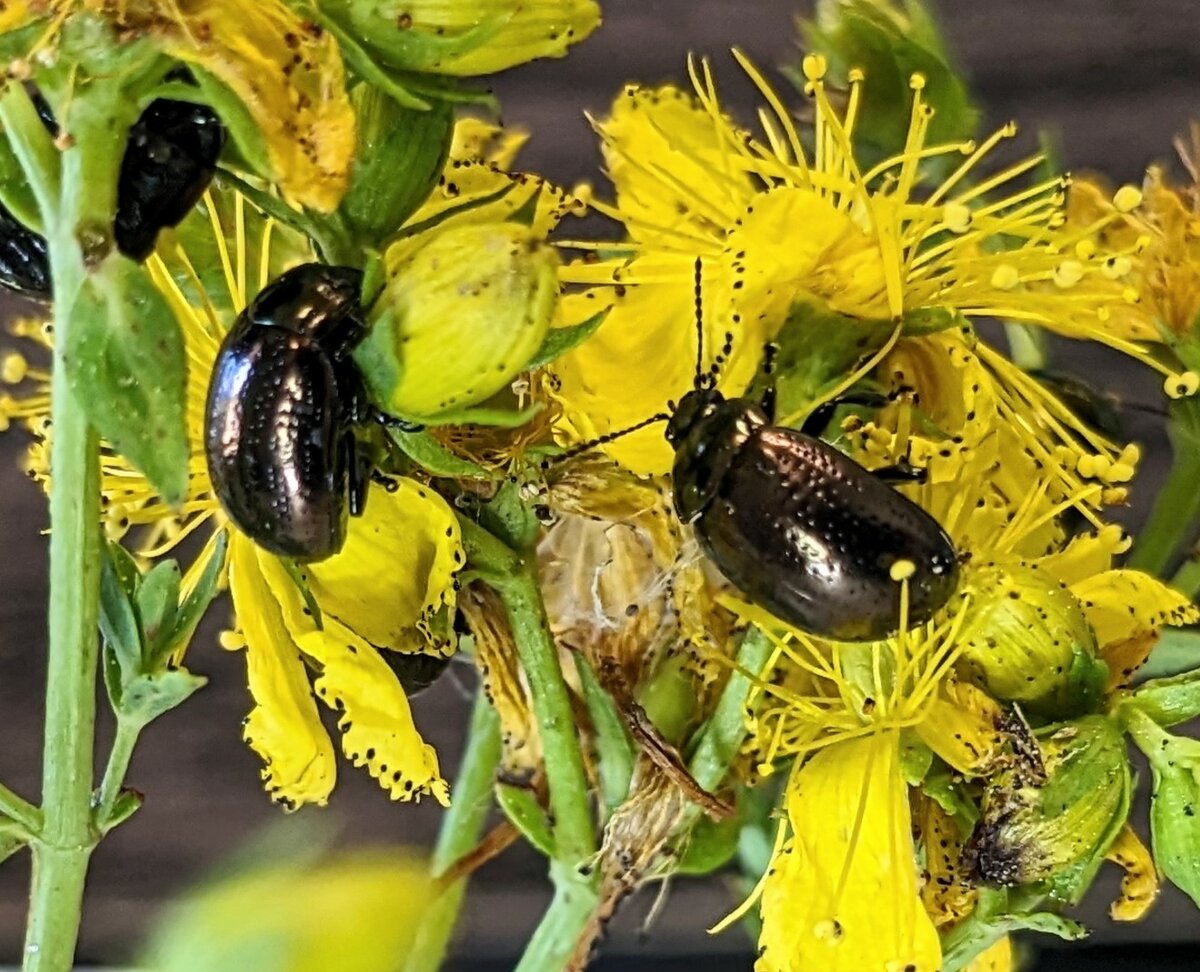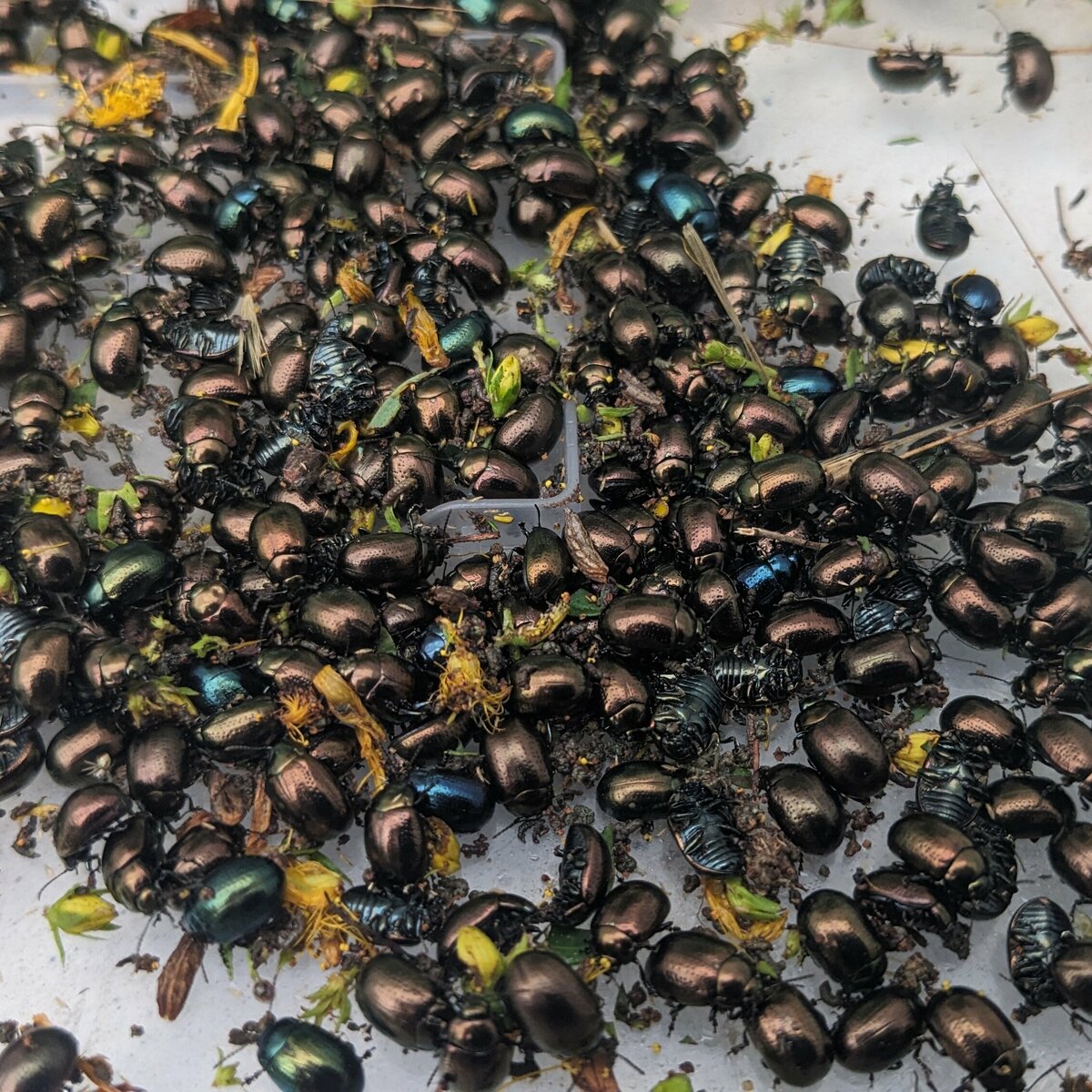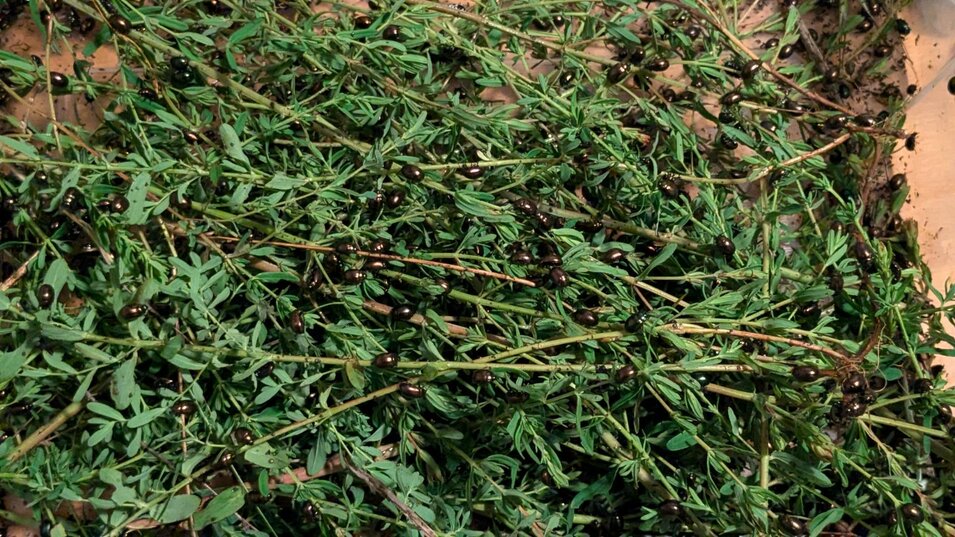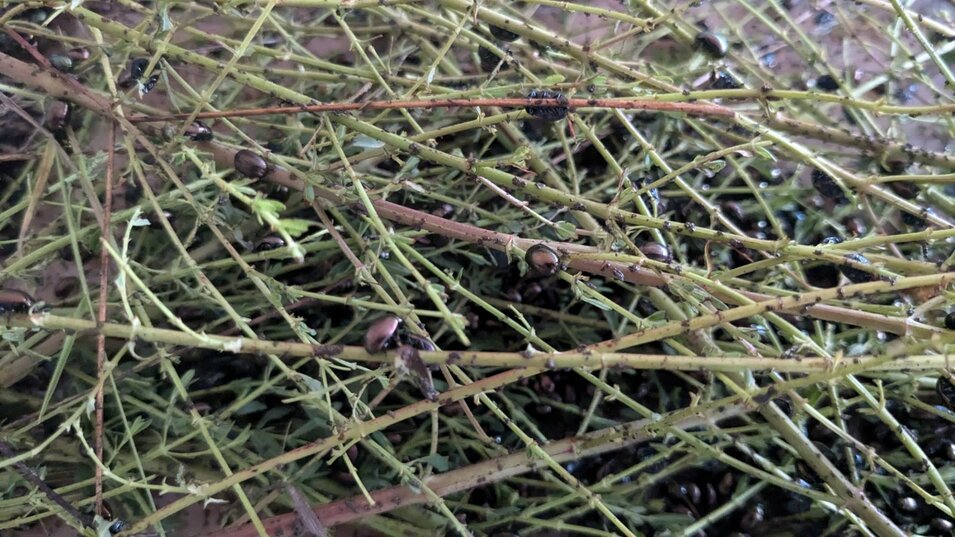New growth may be observed in summer after beetle activity stops, however the production of flowers, where the majority of the problematic hypericin is localised, and where the seeds develop is significantly supressed, or stopped entirely. A healthy plant may contain hundreds of seed pods (≈5-8 mm long), with each pod containing around 60 seeds (≈1 mm long), resulting in an annual production of around 25,000-35,000 seeds. A plant impacted by St. John’s wort beetle may be devoid of seeds.
Beetles will usually emerge from aestivation in March and enter a breeding cycle where females will lay eggs on the fresh leaves of St. John’s wort. Each female can lay hundreds of eggs. Those of the greater St. John’s wort beetle hatch in autumn and larvae feed through winter, while those of the lesser St. John’s wort beetle
Control of St. John’s wort across infested landscapes presents a challenge and we advocate an integrated pest management (IPM) approach. This includes release of St. John’s wort beetles as soon as available in spring, targeted grazing in late autumn throughout winter, spot spraying in spring/summer and mechanical removal at any stage of the year. Slashing will not stop St. John’s wort and may encourage spread. Cultivation where all roots are brought to the surface or hand removal can assist. Grazing, spraying and mechanical removal, including cultivation, needs to be done with the understanding of where biocontrol beetles have been released to not adversely impact their development and beneficial activity.







